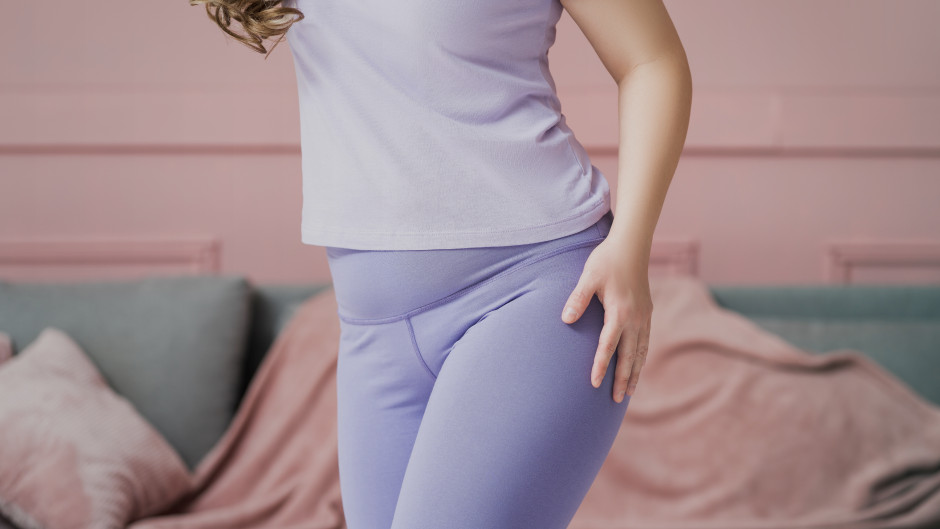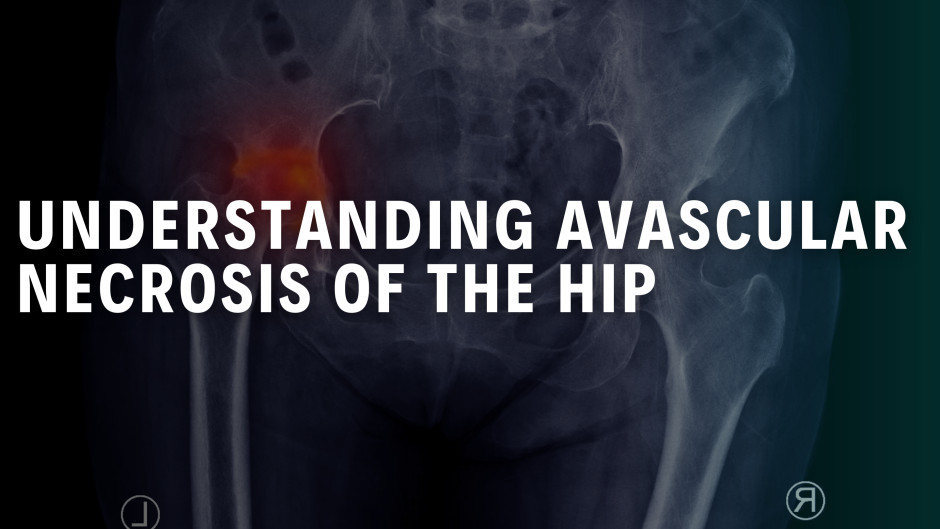How Do We Make Tendons Stronger? The Science of Stiffness, Strength & Performance

When we talk about building strength, we often think of muscles.
But what if the secret to injury-free performance lies deeper — in your tendons?
Tendons are the unsung heroes of human movement — transmitting force from muscle to bone, storing and releasing elastic energy, and ensuring every stride, jump, and lift happens efficiently.
If you want to learn more about this topic, you can watch Peter Malliaras' lecture here:
Understanding how tendons adapt — and how to train them — can transform the way we think about rehab, performance, and injury prevention.
What Is Tendon Stiffness — and Why Does It Matter?
Tendon stiffness isn’t about tightness, it’s about how efficiently a tendon transmits force between muscle and bone.
A stiffer tendon =
- Greater force transfer
- Better energy storage & release
- More control during rapid movement
- Lower strain per contraction (less injury risk)
How Do Tendons Adapt to Loading?
Tendon adaptation is a complex mechanical process involving three key mechanisms:
1) Tensile Strain –
Tendons need enough mechanical strain to trigger collagen remodeling.
This comes from heavy-slow loading.
2) Fluid Movement –
During slow, sustained contractions, fluid moves within the tendon.
This helps the tissue become more compliant and capable of handling stress.
Even an 8-second contraction can cause significant fluid movement!
3) Stress Relaxation –
When a tendon is held under tension for longer periods (e.g., >20 seconds), it stretches more for the same force.
This enhances compliance and may boost long-term adaptation — an effect known as stress relaxation.
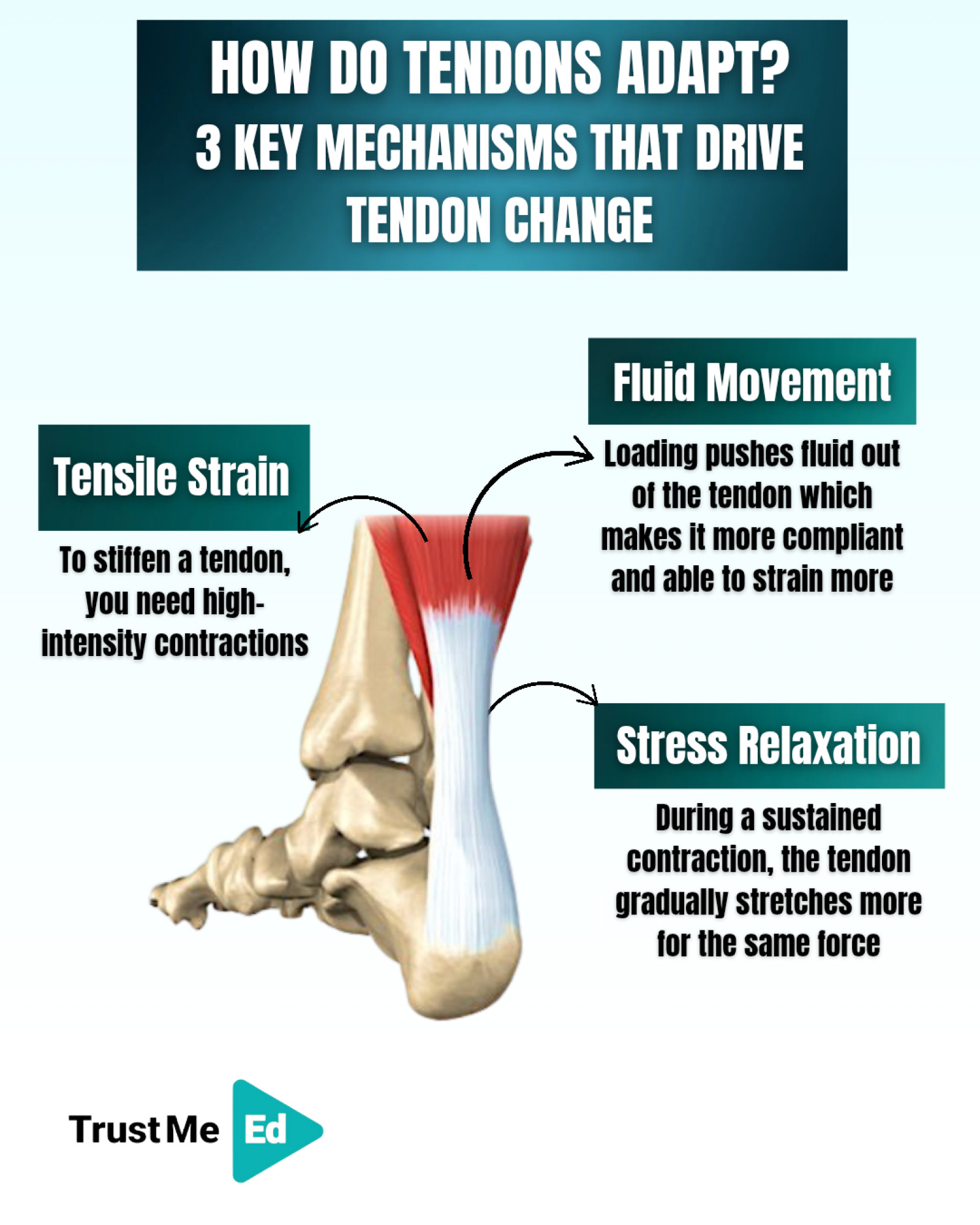
The formula for stronger tendons?
1. Heavy + Slow + Consistent loading
-It produces the right strain (4.5–6.5%)
-Drives collagen remodeling and stiffness
-Builds resilience to high loads
2. Train in lengthened positions
Example: Quadriceps training at 40–90° knee flexion produces greater adaptation than 0–50°, even at equal strain.
3. Give it time
Tendon change is slow but steady — consistency beats intensity!

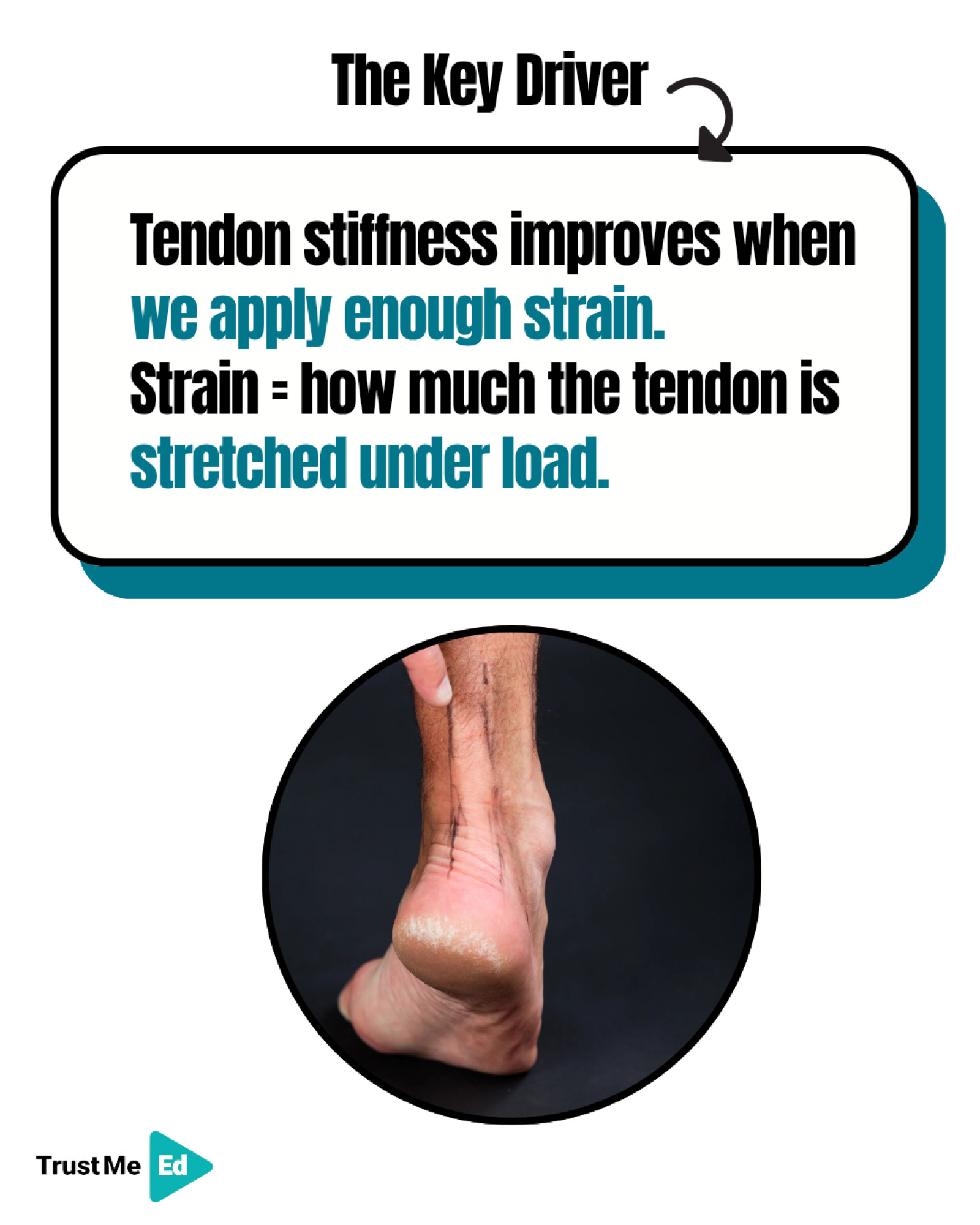
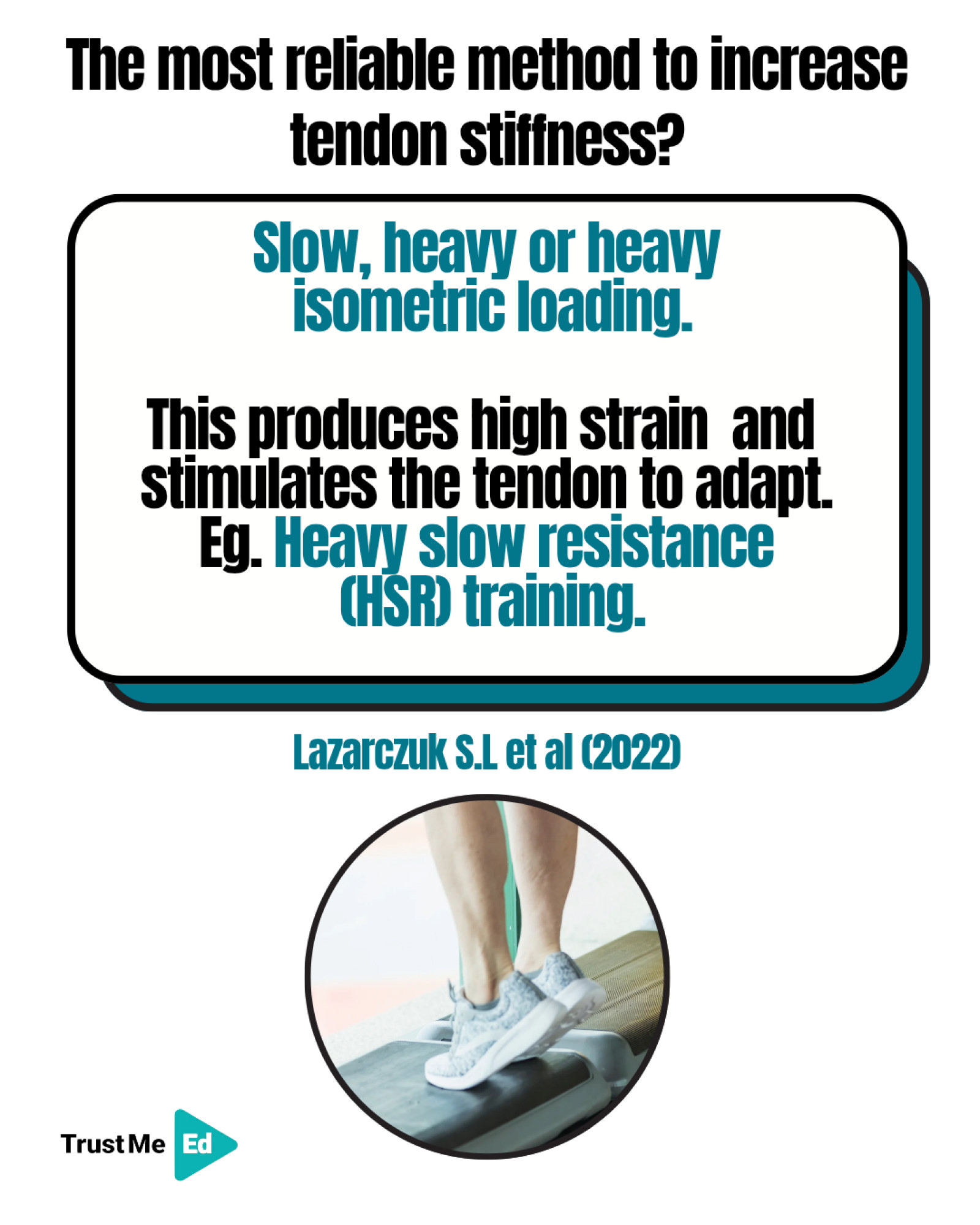
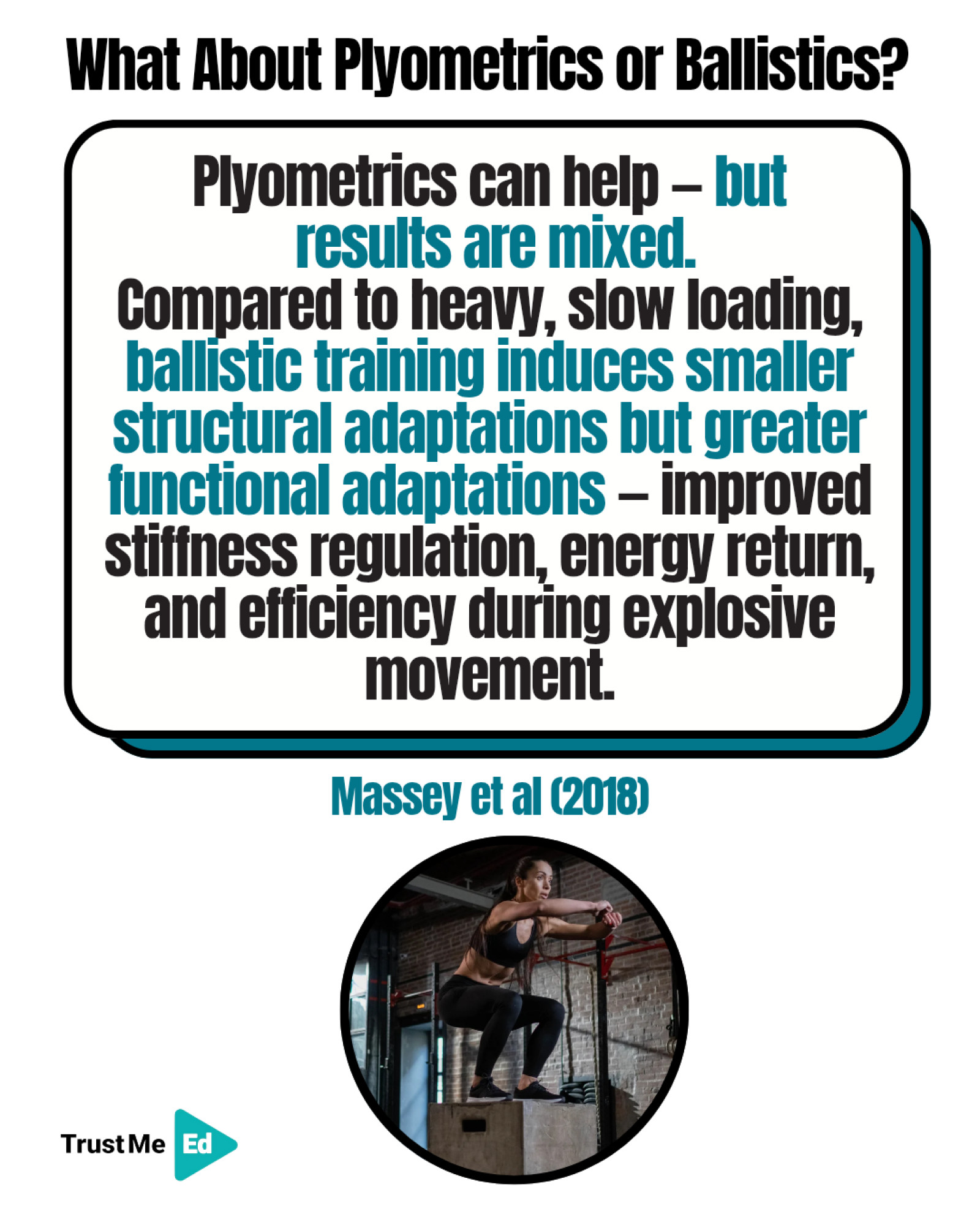
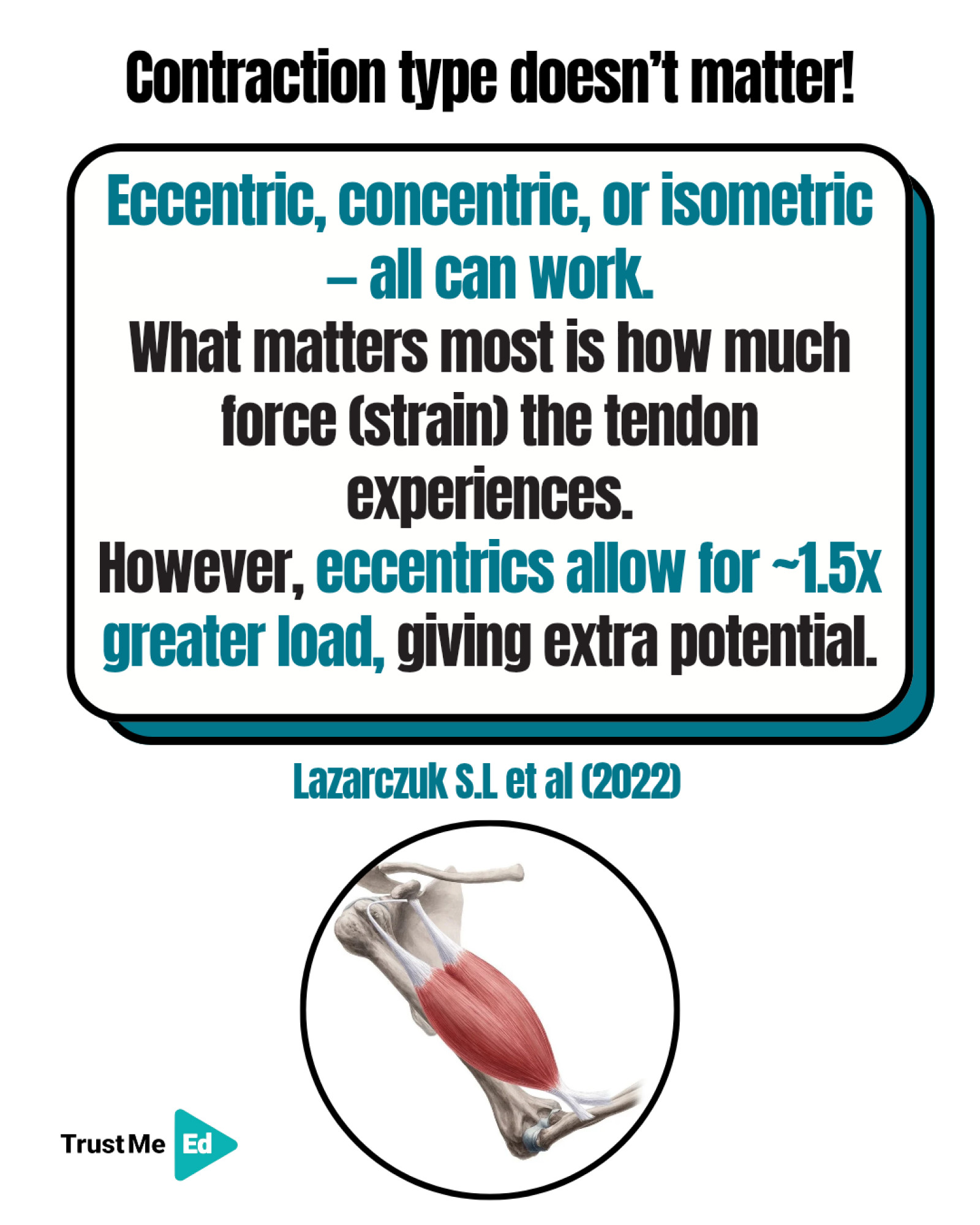
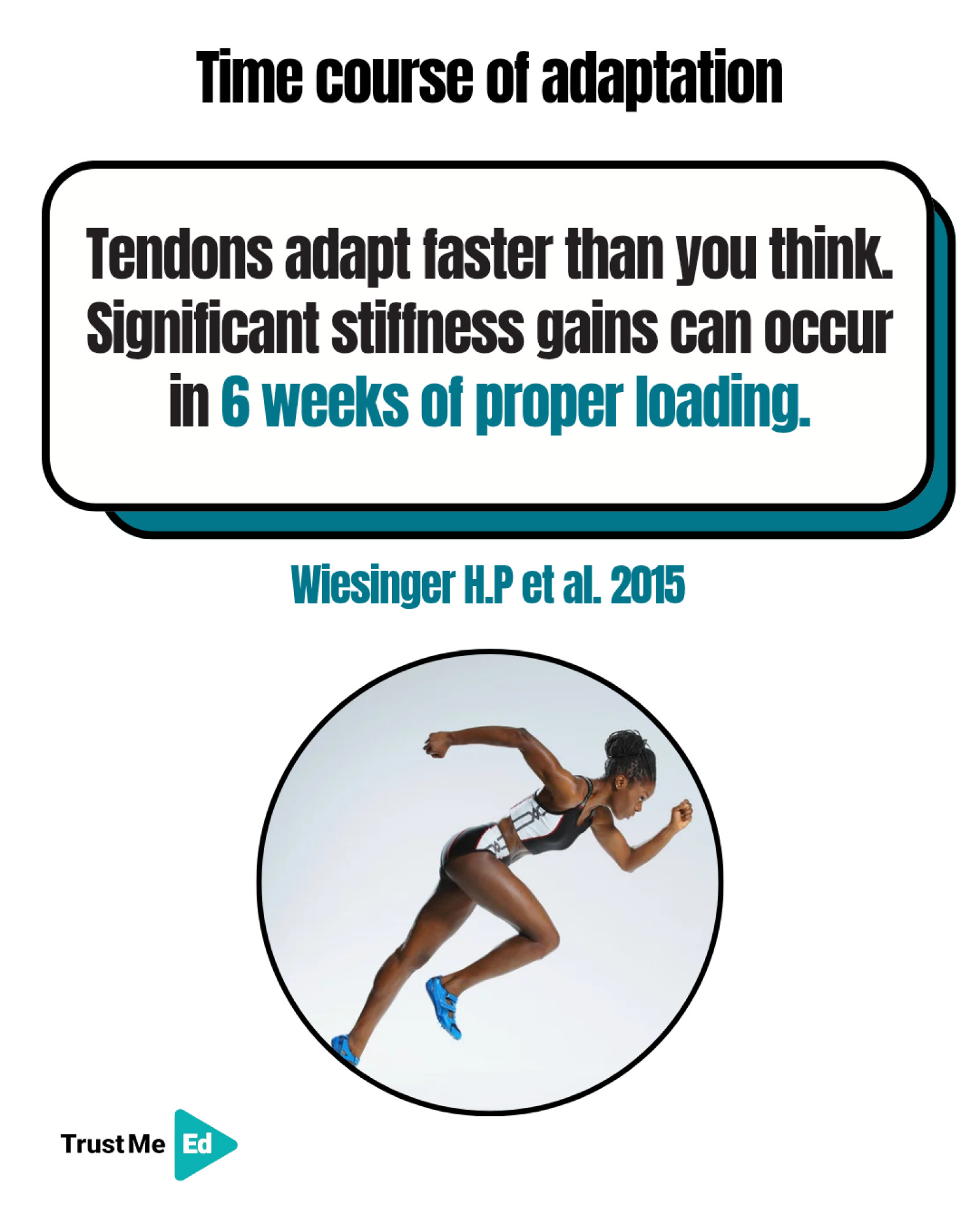
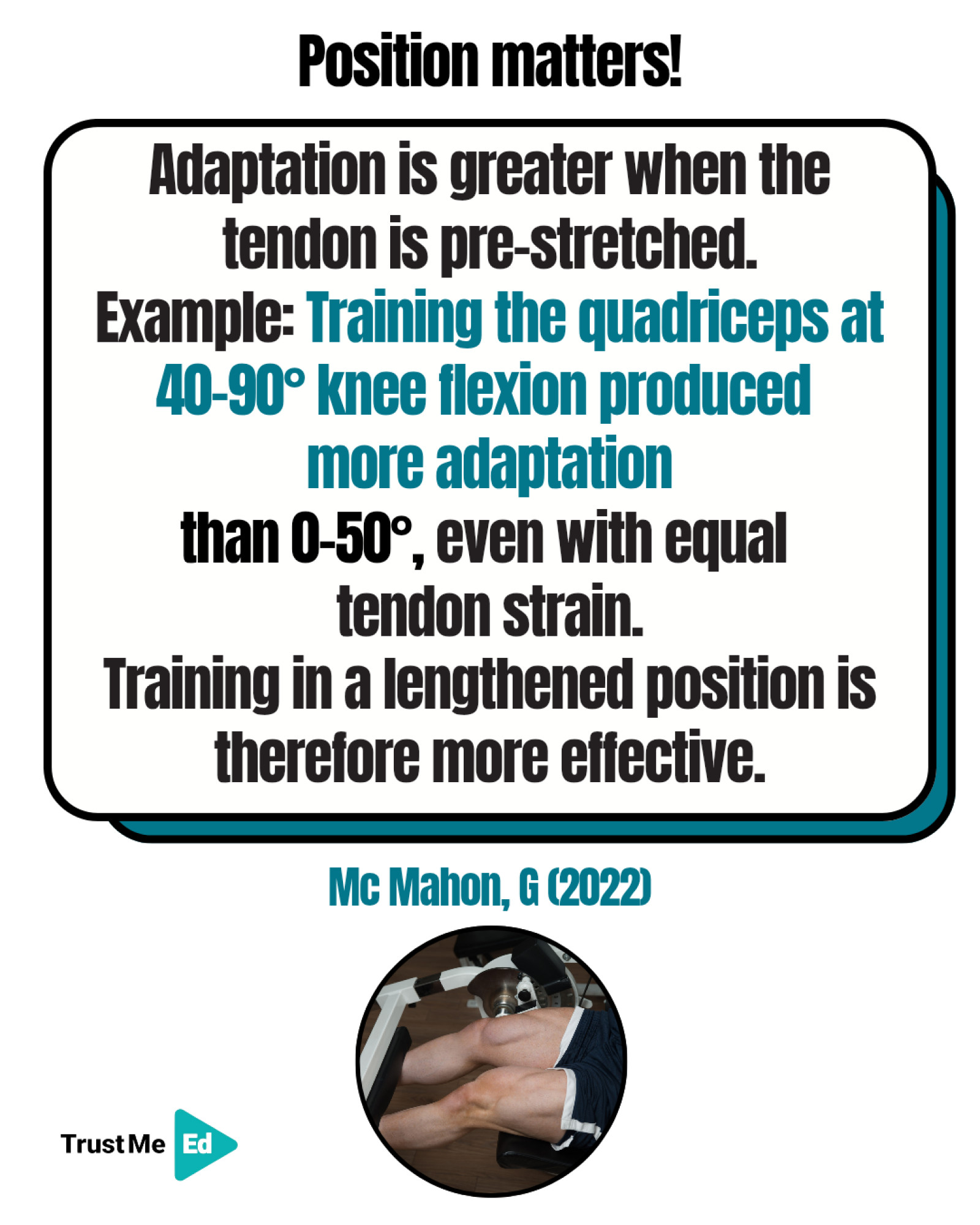
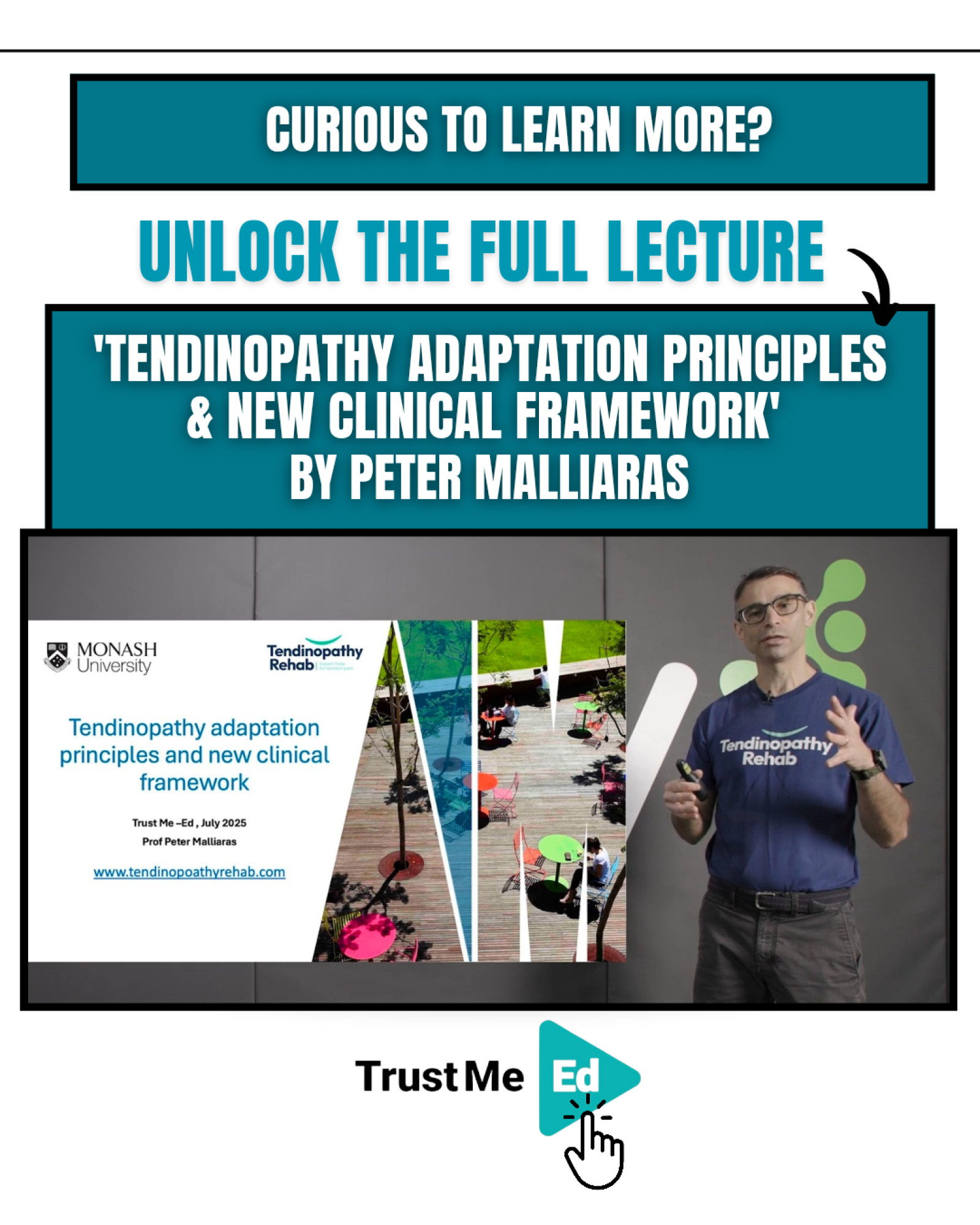
Want to Learn More?
Tendon adaptation isn’t just about loading — it’s about how you load.
From tensile strain and fluid movement to stiffness and stress relaxation, understanding the science helps you design smarter, safer, and more effective rehab programs.
Watch the full lecture 'Tendinopathy Adaptation Principles and New Clinical Framework' by Prof. Peter Malliaras and learn how to build stronger, stiffer, and injury-resistant tendons.
If you want to learn more about this topic, you can watch Peter Malliaras' lecture here:

